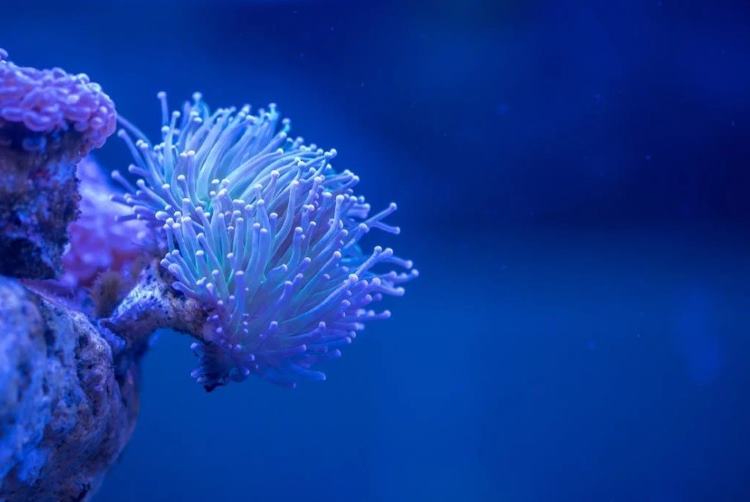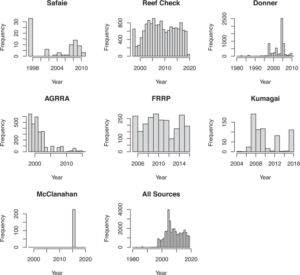
The alarming rise in marine heatwaves has severely impacted the coral reefs in the Lakshadweep Sea, leading to one of the biggest bleaching events on record. Recent data reveals that the degree heating week indicator, which measures accumulated heat stress, has exceeded critical levels, posing substantial risk to these vibrant marine ecosystems. Prolonged exposure to elevated temperatures not only leads to coral bleaching, where corals lose their essential symbiotic algae and turn white, but also jeopardises other marine habitats such as seagrass meadows. These events highlight an urgent need for comprehensive understanding and action to preserve marine biodiversity against escalating ocean temperatures.
The coral bleaching phenomenon is not confined to the Indian coast. A comprehensive synthesis of field observations from 3351 sites across 81 countries reveals a troubling trend. While coral bleaching is most prevalent in regions experiencing high intensity and frequency of thermal-stress anomalies, areas with a high variance in sea-surface temperature (SST) anomalies show significantly less coral bleaching. This variability reveals the complex interaction between local environmental conditions and global warming, challenging the current predictive models and necessitating a more nuanced understanding of coral responses to temperature stress.
READ I Kerala’s heat waves a sign of climate change’s unequal impact
Global phenomenon, local variations
These findings highlight a shift in the thermal threshold for coral bleaching. Over the past decade, the onset of bleaching has occurred at higher SSTs, suggesting possible adaptation or selection for thermally resistant coral genotypes. However, this adaptation might not be sufficient against the backdrop of increasing global temperatures. The 2014–2017 global coral-bleaching event, one of the worst in recent history, decimated vast stretches of coral, indicating the severe impact of prolonged thermal stress on coral resilience.
Datasets included in the Global Coral Bleaching Database

Emerging research suggests that genetic diversity within coral populations may hold critical clues to their resilience against temperature-induced stress. Some coral species exhibit genetic traits that make them more tolerant to spikes in sea temperatures, potentially allowing them to adapt to gradual changes in their environment. This genetic variability not only affects their survival but could also influence the future composition of coral communities as more resilient species may dominate. Enhancing our understanding of these genetic factors is essential for developing effective conservation strategies that support coral adaptation in the face of warming seas.
The stakes are high, not only for the corals but for the entire marine biodiversity dependent on them. Coral reefs, often described as the rainforests of the sea, support a myriad of marine life. They are crucial for the survival of species such as fish, crabs, and marine mammals, all of which rely on the complex structures of coral reefs for food, shelter, and breeding grounds. The degradation of these ecosystems leads to a cascade of effects, threatening the entire marine food web.
Coral reefs at risk, communities under threat
Human communities are also at risk. Coral reefs protect coastal areas from storm surges and erosion, support fishing and tourism industries, and contribute to the global economy in several ways. The loss of coral reefs would thus not only be an ecological catastrophe but a socio-economic disaster as well.
The economic implications of coral bleaching extend beyond the immediate ecological losses. Regions heavily dependent on reef-related activities, such as tourism and fishing, face drastic economic downturns as bleached reefs fail to attract tourists and support fish populations. The Great Barrier Reef, for instance, generates over $6 billion annually for the Australian economy and supports tens of thousands of jobs. Similar economic dependencies exist in numerous small island developing states where coral reefs are integral to the livelihoods of local communities. Effective management and restoration strategies are thus not only ecological imperatives but also economic necessities.
However, hope remains if immediate and decisive action is taken. Local conservation efforts, such as protecting young corals and managing fisheries, can help mitigate some effects of temperature extremes. More importantly, a global commitment to reducing greenhouse gas emissions and enhancing renewable energy use is imperative. The work of organisations like the World Wildlife Fund and ongoing international climate negotiations play a critical role in shaping a sustainable future not only for our coral reefs but for the planet as a whole.
Innovative approaches are being deployed to combat coral bleaching and enhance reef resilience. Techniques such as assisted gene flow, which involves transplanting thermally resistant coral genotypes to vulnerable reefs, and the use of 3D-printed artificial reefs to provide structural support and promote coral attachment and growth, are showing promise. Moreover, advancements in remote sensing technology allow for more precise monitoring of reef health and more timely interventions. These technologies, coupled with traditional conservation practices, present a multifaceted approach to preserving coral ecosystems.
While coral reefs face a grim prognosis under current global warming trajectories, our understanding of their resilience and the implementation of both local and global conservation strategies can still offer a lifeline. As we advance our scientific models and conservation techniques, there remains a sliver of hope for these vibrant ecosystems. Immediate, comprehensive actions to combat climate change and protect our marine environments are not just necessary; they are essential for safeguarding the biodiversity and natural beauty that coral reefs represent.
